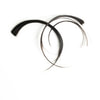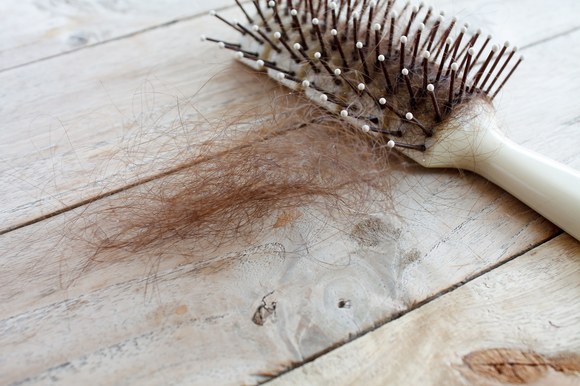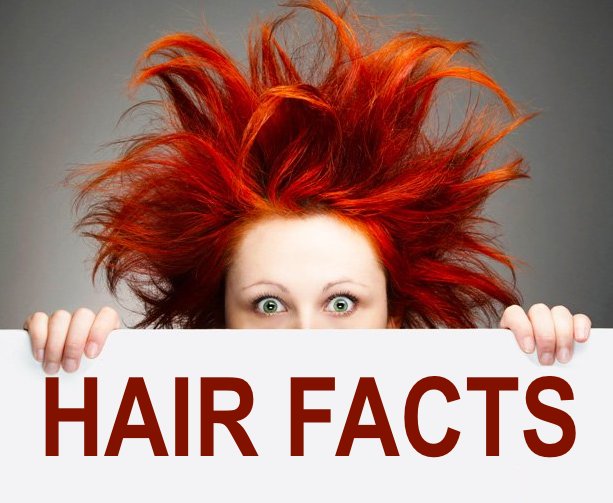|
Many people now prefer to use a sulfate and paraben free shampoo; this is because many scientists are now looking negatively on sulfates and parabens as they are believed to have many adverse side effects. Let’s take a closer look at sulfates and parabens and find out exactly what they are:
What is Sulfate? When you wash your hair with most shampoos, you will most likely work up a thick lather. This thick lather that many of us love to see, is actually produced by the sodium lauryl sulfate placed in the shampoo. Sodium lauryl is a detergent and crystalline salt of sulfated lauryl alcohol. Sodium lauryl sulfate is a surfactant; a surfactant is a product that reduces surface tension between a liquid and a solid. This reduction in surface tension is what produces the rich lather. Once surface tension is removed, the barrier between your hair and the shampoo is eliminated, enabling the sodium lauryl sulfate to rid the hair of oil and dirt. What are Parabens? In order to preserve the shelf life of many shampoos, parabens are used. A paraben is a preservative and it is used to prevent the growth of bacteria and fungus in shampoos. There are many different types of parabens, namely, butylparaben, ethylparaben, methylparaben, propylparaben and isobutylparaben. For over seventy years they have been used as preservatives but recently scientist have begun to question their safety. Sulfates are known irritants that are harsh on the scalp and hair. Recent studies have found it to be more toxic than previously realized. Parabens an cause allergic reactions and exacerbate some skin conditions. With all the doubt being cast on the safety of sulfates and parabens, it is wise to switch to a sulfate and paraben free shampoo. Here are five reasons why you may find this switch beneficial:
This article appeared on ShampooTree
0 Comments
By Donna Freydkin
You know that feeling, right? You're sudsing up your hair in the shower, you go to rinse it, and as you run your fingers through it...clumps of it cling to your hands. It's one of those panic-inducing moments in which you wonder how much hair loss is normal, whether there's something medically wrong with you, and if someday, you'll wind up with bald patches. Chances are, you're just fine. In fact, you may just be dealing with seasonal hair loss. It's one of the great ironies of my life that hair grows unabated where I don't want it (like in the nose) but then, drops with abandon from my head, especially when the weather gets colder. No surprise there, say experts. "There is evidence that people can note increased shedding in the late fall and winter months. The thought here is that perhaps in the summer months, we hang on to more hair to provide increased protection from the sun. A few months after, when we begin shifting into late fall and early winter, those hairs that we held onto during summer will make a transition into the shed phase. This may result in a temporary increase in shedding compared to your baseline," Emily Wise Shanahan, a Massachusetts–based dermatologist, tells Allure. And yes, joy of joys, it may be more noticeable as you get older. "By 50 years of age, 50 percent of women will experience some degree of hair loss. Hair loss is often seen at any age after pregnancy, surgery or illness. It is also seen in pre- and perimenopausal women, during their early to mid-50s," Kristina Goldenberg, a New York–based dermatologist, tells Allure. Some hair loss is par for the course, but when it comes to seasonal loss, you can blame the thermostat. Still, if you do notice you're losing more hair around the cooler months, don't despair, as New York–based dermatologist Jeremy Fenton tells us. Chances are, the hair you lost will be back in the future. "There has been some research that has shown that there is some seasonality to [shedding]. One study showed that human hair has the highest number of hairs in the telogen phase in July, and a second smaller peak in April. Hairs in the telogen phase generally fall out 100 days later, which means that people would see a shedding at the end of the summer and into the fall. These hairs are not necessarily lost forever, as a healthy hair follicle will then eventually cycle back into its growth phase. The reason for this isn’t entirely clear. Some postulate that it is based on evolution, creating more hair in the summer to protect the scalp. Others believe it also is about the body minimizing the shedding during the winter months," says Fenton. Meaning, your scalp may respond to changes in daylight hours. "We believe that the body is responding in some hormonal manner to the changes in the amount of daylight. The longer daylight hours of the summer trigger the hair to enter the telogen phase, which then triggers the shedding at the end of that phase. The precise mechanism is not clear," says Fenton. So this brings us to the big question: What, if anything, can you do about it? "It is always a good idea to make an extra effort in the winter months to keep the hair hydrated and moisturized. Use a deep conditioning mask. Likewise, limiting heat styling can be helpful for the same reasons," Wise Shanahan says. Kérastase has a whole line devoted to thinning hair, and Harklinikken, which just launched stateside, says it can help deal with hair loss. Peter Thomas Roth makes a killer mask, as does Christophe Robin. Another way to give your hair a little bit of help as it cools down is to do what your mother has been telling you to do all these years: Take your vitamins. "You can also strengthen the hair that you have by taking supplements. Biotin is one of the most effective options out there, and it is available over the counter at most drugstores," says Fenton. It may not prevent shedding, but it can prevent breakage and also make the hair you do have actually appear thicker. Another way to prevent breakage of winter hair is to moisturize with a conditioner and avoid too much friction from prolonged wearing of hats." Mostly, though, a good rule of thumb is paying attention to the part in your hair and noticing if it gets wider. And remember to be kind to your strands during rougher weather. Also: Pay attention to whether your hair is actually shedding or just breaking off. "With winter months comes drier weather and hats rubbing against the hair. Dry, brittle hair is more likely to break and the friction of hats can further contribute to this. Although this is not true hair 'loss,' it can make your hair appear thinner," says Fenton. If you notice stray locks piling up on your clothes or your pillow, don't panic, says Wise Shanahan. "If you find that you have local bald patches or that your shedding is localized to a specific area such as the frontal hairline or the central part, this may represent a different type of hair loss and should be evaluated by a doctor." Noted. So here's the takeaway: You can't really mess with Mother Nature. "There is not much the average person can do to prevent this seasonal shedding. However, if you are somebody who is already concerned about thinning hair, then I would recommend Rogaine (the generic name is minoxidil). This is a topical solution or foam that you can apply to the scalp to help reduce hair loss. One of the proposed mechanisms of minoxidil is that it prolongs the anagen phase of the hair, which is the growth phase. Thus, it may help prevent some of the hairs from entering that telogen phase of summer and ultimately reduce the fall shedding. If you were to use minoxidil, I would recommend using it year-round. Sometimes when you first start using it, it can have some initially shedding effects that are temporary as the hairs adjust their cycle," says Fenton. This article first appeared on allure 11/25/2017 0 Comments Why does hair turn gray?If you look at photos of President Obama taken before he ran for president and since he left office, you’ll notice a distinct difference: where there used to be only dark brown hair, there is now far more gray than brown. It seems that the stress of running a country would turn any person’s hair gray. But is stress really to blame? And why does hair turn gray, even for those of us who don’t have jobs quite as stressful as President of the United States?
Stress doesn’t actually turn hair gray. In fact, hair doesn’t actually “turn” gray. Once a hair follicle produces hair, the color is set. If a single strand of hair starts out brown (or red or black or blond), it is never going to turn gray. Your hair follicles produce less color as they age, so when hair goes through its natural cycle of dying and being regenerated, it’s more likely to grow in as gray beginning after age 35. Genetics can play a role in when this starts. While being under stress can’t turn your hair gray, stress can trigger a common condition called telogen effluvium, which causes hair to shed at about three times faster than normal. The hair grows back, so the condition doesn’t cause balding. But if you’re middle-aged and your hair is falling out and regenerating more quickly because of stress, it’s possible that the hair that grows in will be gray instead of its original color. Illnesses that cause gray hair The vast majority of people with gray hair have age-related graying. However, sometimes graying hair indicates an illness, especially if it occurs at a particularly young age. Health problems that may be heralded by gray hair include:
Some research also links premature graying to heart disease and low bone mass (called osteopenia, a precursor of osteoporosis). How these conditions relate to hair graying is unclear. Cigarette smoking can also cause premature graying. The bottom line When and how thoroughly your hair turns gray is influenced mostly by the genes you inherit from your parents. Though stress may play a role in the process, it would be more helpful to look to past generations rather than your current stress levels to help you predict when or if you’ll go gray. That’s true whether you’re the President of the United States, or someone with a less stressful job. This article first appeared on Harvard Health Publishing 11/22/2017 0 Comments The 2017 Men's Hair CensusDove Men+Care Release |
Hair by BrianMy name is Brian and I help people confidently take on the world. CategoriesAll Advice Announcement Awards Balayage Barbering Beach Waves Beauty News Book Now Brazilian Treatment Clients Cool Facts COVID 19 Health COVID 19 Update Curlies EGift Card Films Follically Challenged Gossip Grooming Hair Care Haircolor Haircut Hair Facts Hair History Hair Loss Hair Styling Hair Tips Hair Tools Health Health And Safety Healthy Hair Highlights Holidays Humor Mens Hair Men's Long Hair Newsletter Ombre Policies Procedures Press Release Previous Blog Privacy Policy Product Knowledge Product Reviews Promotions Read Your Labels Recommendations Reviews Scalp Health Science Services Smoothing Treatments Social Media Summer Hair Tips Textured Hair Thinning Hair Travel Tips Trending Wellness Womens Hair Archives
June 2025
|
|
Hey...
Your Mom Called! Book today! |
Sunday: 11am-5pm
Monday: 11am-6pm Tuesday: 10am - 6pm Wednesday: 10am - 6pm Thursday: By Appointment Friday: By Appointment Saturday: By Appointment |






 RSS Feed
RSS Feed